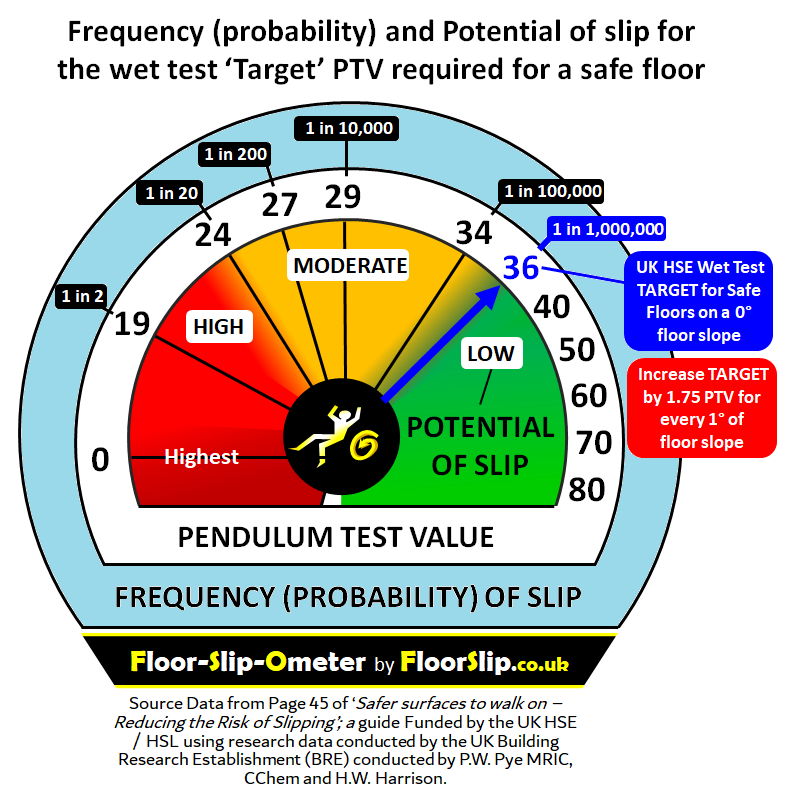The Probability of Floor Slip
The Probability of Slip values now termed as the Frequency of Slip under Floor Test Standard EN-16165 (gradually replacing BS-7976-2), are values determined from research funded by the UK HSE / HSL (Health and Safety Executive / Health and Safety Laboratories).
It has been determined that a floor that can deliver a Frequency (Probability) of Slip of 1 in 1 milllion (1,000,000) in WET conditions, or CONTAMINATED conditions with substances relevant to the locale, is acceptable to provide a Safe Floor Surface.
The Pendulum Floor Test Value of 36 PTV when the floor is WET / CONTAMINANT tested is considered as the minimum bench mark to work to to achieve a safe floor that will meet UK Laws on Floor Safety. This will deleiver a LOW SLIP POTENTIAL. The 'Floor-Slip-Ometer' (image below) designed by FloorSlip using the HSE/HSL data best shows the correlation of values.

Additional PTV for Floor Slopes and to combat wear
The Pendulum Test Value 'Target' of 36 PTV is a minimum recommended by the UK HSE when the floor is likley to become wet or contaminated and cleaning of water or spills is difficult or impossible. However any floor slope will increase the risk of slip so the 'Target PTV' must be increased on Floor Slopes by approx. 1.75 PTV for every one degree of slope.
In addition, consider that every floor wears, soft floors like vinyl wearing very quickly. It is therefore always suggested to aim at a floor surface better than 36 PTV (where 0 PTV is the worst state)
What if I can not achieve 36 PTV?
If the floor is likely to be dry at all times and any spills / contamination / walked in water (like rainwater) can be QUICKLY and effectively cleaned up and the RESPONSE TO SPILLS IS CONSISTENT, then ALARP principals 'might' be able to be applied - see the section on ALARP in respect to Floor Safety